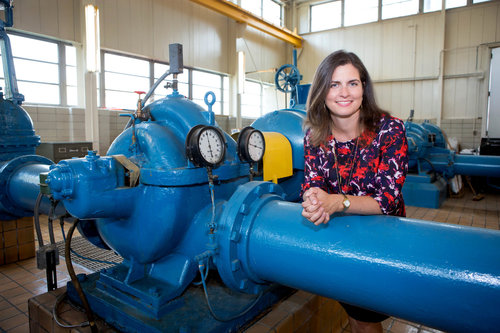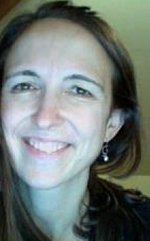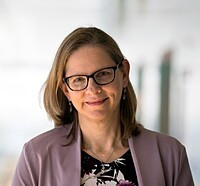Communities living in cities throughout the U.S. are struggling to address their aging drinking water infrastructure, and public health safeguards are falling short. Old lead service lines, plumbing, and fixtures are primary sources of harmful lead exposure. There is scientific consensus that there is no safe level of lead. Even low-dose, chronic exposure has been found to cause irreversible cognitive, behavioral, and physical delays in children. Scientific studies have also demonstrated associations between lead exposure and adverse health outcomes including high blood pressure and kidney disease in adults. Lead exposure is entirely preventable, but such measures as public awareness, filtration, testing, corrosion control, and source remediation are necessary to avoid this public health epidemic.
During this webinar Dr. Yanna Lambrinidou discussed the scientific and historical basis behind gaps in the federal Lead and Copper Rule (LCR), the U.S. Environmental Protection Agency (EPA) regulation that was enacted in 1991 to protect tap water users from exposures to lead in drinking water. Focusing on the LCR's four pillars – corrosion control treatment, tap monitoring, remediation, and regulatory compliance – Dr. Lambrinidou outlined the main reasons why, in its existing form, the LCR inadequately protects public health. She concluded by calling for a paradigm shift in how we think about and address lead in water that better reflects current scientific understanding of the problem.
The EPA Lead and Copper Rule establishes requirements for using corrosion control to reduce lead and copper levels in drinking water, but weaknesses in this federal rule have allowed lead in water crises to occur across the country, including Washington, DC and Flint, MI. Elin Betanzo gave an overview of how the state of Michigan recently revised their LCR to overcome several of the weaknesses in the federal rule. Elin highlighted the science behind sources of lead contamination in drinking water. She explained how the new provisions of the Michigan LCR will reduce harmful exposure.
Consumers are increasingly responding to concerns about contaminated drinking water by installing point-of-use (PoU) treatment devices at the tap. Among the more commonly used devices are faucet-mounted activated carbon block (ACB)-PoU filters. In addition to lead and copper, other contaminants removed by these devices include selected organics such as disinfection byproducts, PFAS, and chlorine or chloramine disinfection residuals. Although effective at contaminant removal, ACB-PoU devices are notorious for supporting significant microbial growth. During this webinar, Dr. Nancy Love discussed her research of how microbial opportunistic pathogens colonize ACB-PoU filters designed for household use. Dr. Love gave some background and then highlighted the known and unknown science around water quality issues that may occur through use of these devices. She also talked about strategies that can be used to enhance ACB-PoU performance and water quality. Outcomes from her work suggests that conventional dogma about water quality coming from ACB-PoU filters needs to be reconsidered, especially in communities with aging infrastructure, high water ages, and populations with elevated health disparities.
Featured Speakers
 Elin Betanzo is the founder of Safe Water Engineering LLC, a small consulting firm working to improve access to safe drinking water through engineering and policy consulting. Elin has over 15 years of drinking water experience. She worked for the Environmental Protection Agency in the Office of Ground Water and Drinking Water developing and implementing regulations under the Safe Drinking Water Act and serving as the National Tribal Drinking Water Coordinator. She was a hydraulic engineer and water planning manager at the Washington Suburban Sanitary Commission where she led water system master planning and hydraulic modeling.
Elin Betanzo is the founder of Safe Water Engineering LLC, a small consulting firm working to improve access to safe drinking water through engineering and policy consulting. Elin has over 15 years of drinking water experience. She worked for the Environmental Protection Agency in the Office of Ground Water and Drinking Water developing and implementing regulations under the Safe Drinking Water Act and serving as the National Tribal Drinking Water Coordinator. She was a hydraulic engineer and water planning manager at the Washington Suburban Sanitary Commission where she led water system master planning and hydraulic modeling.
Elin holds a Master of Science in Environmental Engineering and a Water Quality Management Certificate from Virginia Tech. She also has a Bachelor of Science in Environmental Science and a Bachelor of Fine Arts in Piano Performance from Carnegie Mellon University. Elin is a Professional Engineer registered in Michigan, Maryland and Virginia, and a certified water system operator in Maryland. She served on the Federal Advisory Committee on Water Information from 2014-2017.
 Yanna Lambrinidou, PhD, is affiliate faculty in the Department of Science and Technology in Society at Virginia Tech and founder of the non-profit children’s environmental health organization Parents for Nontoxic Alternatives. Her work focuses on environmental health, policy, and justice at the intersection where scientists, engineers, and diverse public meet.
Yanna Lambrinidou, PhD, is affiliate faculty in the Department of Science and Technology in Society at Virginia Tech and founder of the non-profit children’s environmental health organization Parents for Nontoxic Alternatives. Her work focuses on environmental health, policy, and justice at the intersection where scientists, engineers, and diverse public meet.
As a resident of Washington, DC, Dr. Lambrinidou lived through the District’s historic lead-in-water crisis of 2001-2004. She helped uncover irregularities in the government’s resolution of the problem. The educational blog she created in 2009 to keep District residents abreast of the science of lead in water and problems with flawed and misleading research, claims, and practices, triggered fundamental changes in the leadership and culture of Washington, DC’s water utility. Since 2007, Dr. Lambrinidou has worked exclusively on lead in drinking water, in Washington, DC and nationally. In 2014-2015, she served on the Environmental Protection Agency (EPA) National Drinking Water Advisory Council (NDWAC) work group that was convened to issue recommendations for revisions to the federal Lead and Copper Rule (LCR). She is currently researching engineers’ imaginaries of “the public” under an NSF “Early-concept Grant for Exploratory Research” (EAGER).
 Nancy G. Love, PhD, is the Borchardt and Glysson Collegiate Professor of Civil and Environmental Engineering at the University Michigan, and an adjunct Professor at the Institute of Biotechnology at Addis Ababa University. She has advised over 70 graduate students and post-doctoral research associates. Her research focuses at the interface of water, infrastructure and public health. She and her students evaluate the fate, detection and treatment of chemical and biological contaminants in water systems, and advance resource recovery technologies. She has co-authored: over 100 peer reviewed papers, chapters and reports; over 250 conference presentations; and the 2011 textbook Biological Wastewater Treatment, 3rdEdition by Grady, Daigger, Love and Filipe. Dr. Love has held leadership positions in multiple organizations, including with the Water Environment Federation (WEF), the International Water Association (IWA), and the Association of Environmental Engineering and Science Professors (AEESP), and is a Fellow of all three organizations. Dr. Love is a licensed professional engineer (P.E.) in the state of Michigan and a Board Certified Environmental Engineer (BCEE). She has been selected as the 2019 Kappe Lecturer for the American Academy of Environmental Engineers and Scientists.
Nancy G. Love, PhD, is the Borchardt and Glysson Collegiate Professor of Civil and Environmental Engineering at the University Michigan, and an adjunct Professor at the Institute of Biotechnology at Addis Ababa University. She has advised over 70 graduate students and post-doctoral research associates. Her research focuses at the interface of water, infrastructure and public health. She and her students evaluate the fate, detection and treatment of chemical and biological contaminants in water systems, and advance resource recovery technologies. She has co-authored: over 100 peer reviewed papers, chapters and reports; over 250 conference presentations; and the 2011 textbook Biological Wastewater Treatment, 3rdEdition by Grady, Daigger, Love and Filipe. Dr. Love has held leadership positions in multiple organizations, including with the Water Environment Federation (WEF), the International Water Association (IWA), and the Association of Environmental Engineering and Science Professors (AEESP), and is a Fellow of all three organizations. Dr. Love is a licensed professional engineer (P.E.) in the state of Michigan and a Board Certified Environmental Engineer (BCEE). She has been selected as the 2019 Kappe Lecturer for the American Academy of Environmental Engineers and Scientists.
This webinar was moderated by Karen Wang, PhD, director of CHE. It lasted for 70 minutes and was recorded for our call and webinar archive.
